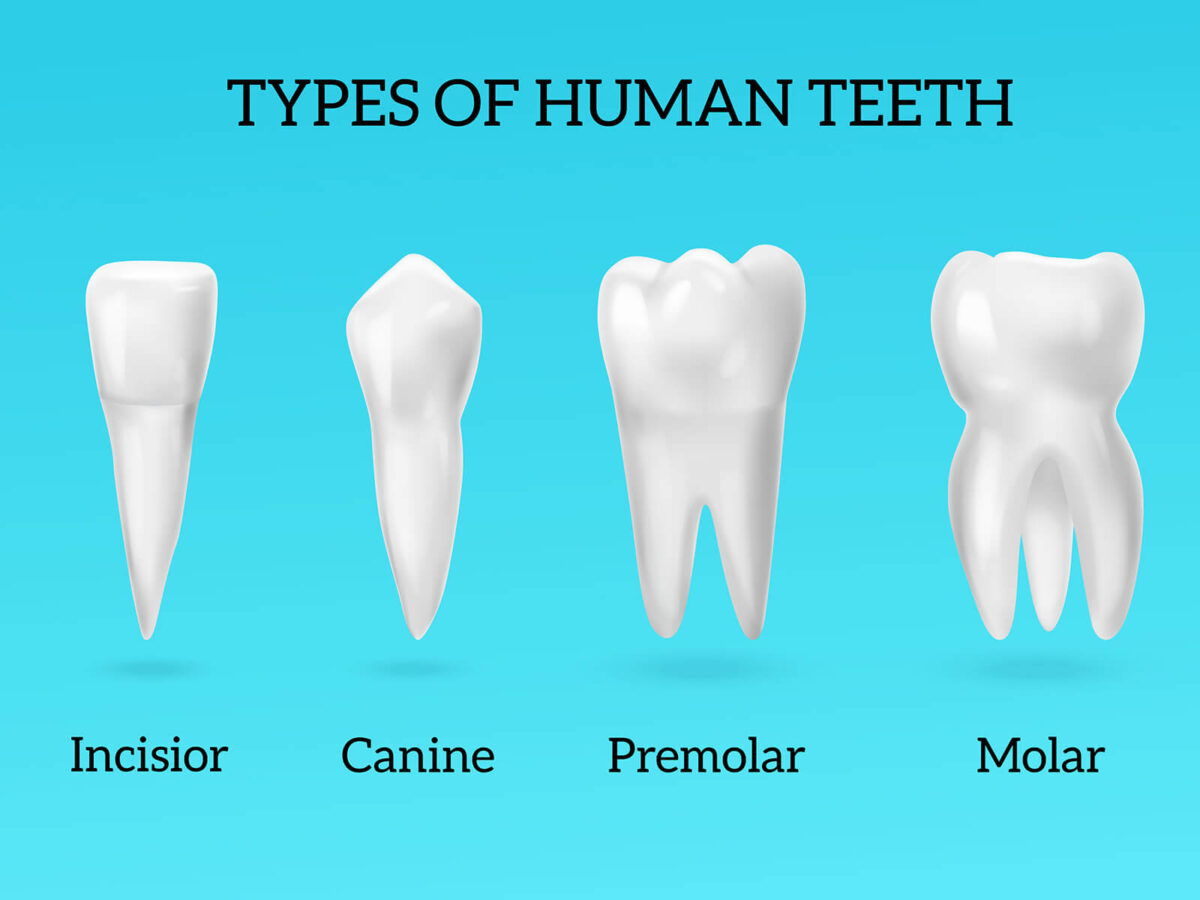Blog
Dental hygiene tips for healthy teeth & gums

A Simple Guide to The Different Types of Teeth
Teeth are essential to our daily lives because they let us bite, chew, and talk clearly. To keep your mouth healthy, you must know the different kinds and names of human teeth and what they do. This easy-to-understand blog tells you about the different types of teeth, what makes them unique, and how they work together to keep your mouth healthy.
List of Different Names of Human Teeth
1. The incisors (front teeth):
- It’s at the front of the mouth.
- Edges that are sharp and chiseled.
- Strong enough to cut and bite.
What does it do?
Most of the time, scissors are used to cut and slice food. Every corner of the mouth has four incisors, two on top and two on the bottom.
2: Canines (cuspids):
- Teeth that are pointed and cone-shaped.
- Placed next to the front teeth.
- Roots that are usually longer.
What does it do?
Canines are essential for tearing and holding food. When the lips close, they help move the other teeth into place, which makes biting and pulling easier.
3. Premolars, also called bicuspids:
- Flatter surfaces with two or more cusps are its traits.
- Placed behind the front teeth.
- Have one or two roots most of the time.
What does it do?
Premolars are functional teeth because they have traits from both canines and molars. They break down food by grinding, tearing, and crushing it, which is an integral part of the first steps of digestion.
4. The molars:
- Broad, flat areas with many points.
- It is found at the back of the mouth.
- These teeth usually have two or three roots.
What does it do?
The molars are the biggest and strongest teeth. They are used to crush and grind food. They are essential in digestion because they break down food into smaller pieces that are easier to swallow.
5. Third molars, also known as “wisdom teeth”
- These are the third set of molars, and they usually come in late in youth or early in adulthood.
- They come out differently and may not show up in some people.
What does it do?
Evolution needed more molars in the past for a more robust diet, which is where wisdom teeth come from. However, many people have problems when their wisdom teeth come in, which can cause issues like impaction, crowding, or misalignment.
6. Permanent teeth vs. primary (falling out) teeth:
- Primary teeth are the first teeth that come in when a baby is young.
- Permanent teeth come in after a child’s baby teeth fall out.
- Most adults have 32 permanent teeth.
What does it do?
Primary teeth are temporary teeth that are there until the permanent teeth come in. As children grow, they are essential for developing speech, facial shape, and good oral hygiene habits.
7. Dental anatomy: the crown, the neck, and the root:
- Crown: You can see the tooth part above the gum line. The crown’s structure and shape depend on the type of tooth and what it’s used for.
- Neck: The part of the tooth where the tip meets the root. Usually found just below the gum line.
- The root is the part of the tooth rooted in the jawbone. It holds the tooth in place and keeps it stable.
8. Enamel, dentin, and pulp of the teeth:
- The enamel on your teeth is the top layer that protects your teeth. A hard covering that keeps the tooth from getting cavities.
- Dentin is located beneath the enamel. It’s softer than enamel but harder than bone
- Makes up most of the tooth’s structure.
- The pulp is inside the tooth and comprises nerves, blood vessels, and muscle tissue.
- Important for the tooth’s ability to sense and receive food.
The End:
Understanding the different names of human teeth and how they work is essential to appreciate how complicated and useful the human mouth is. Each type of tooth does a different job when it comes to biting, tearing, grinding, and finally, eating food. A balanced diet, good oral care, and regular dental check-ups are all things that can help keep these critical structures healthy and long-lasting so you can smile with confidence and enjoy good oral function for a lifetime.
